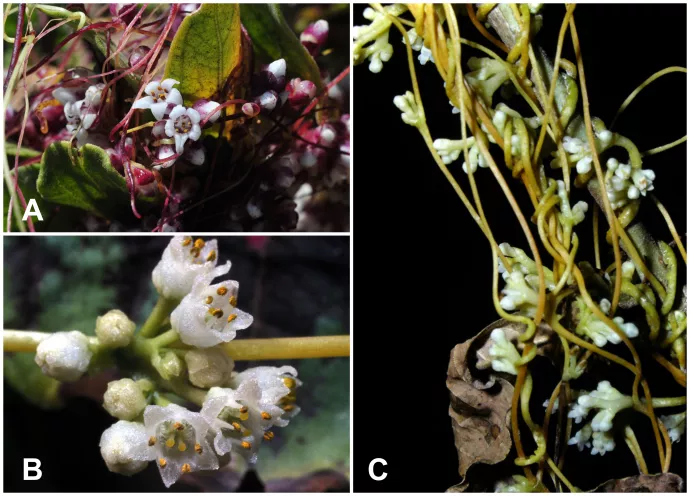
A Comparative Study Across the Parasitic Plants Reveals...
Congratulations go to Arjan Banerjee, PhD, Stefanovic Lab, on their paper A comparative study across the parasitic plants of Cuscuta subgenus Grammica (Convolvulaceae) reveals a possible loss of the plastid genome in its section Subulatae published by Planta
https://doi.org/10.1007/s00425-023-04099-y
Dr. Banerjee recently started his post-doctoral research at UTM studying the transcriptomics of parasitic plants. His Ph.D. work, completed in 2022, was conducted in the lab of Prof. Saša Stefanović and focused on the comparative genomics of plastid genomes in the parasitic plant genera Cuscuta and Krameria. He is originally from Kolkata, India, and moved to Canada in 2011.

The genus Cuscuta is one of 12 lineages of plants with independent origin of a parasitic lifestyle (i.e., establishing a direct vascular connection with an autotrophic host plant). The largest Cuscuta subgenus, Grammica, contains c. 153 species which are all obligate parasites. However, some species have been shown to be capable of limited and localized photosynthesis, whilst others retain no photosynthetic ability whatsoever. This subgenus, thus, serves as a tractable system for studying the genomic effects of an evolutionary transition from autotrophy to heterotrophy. In particular, this research focuses on the plastid genome in which these effects are expected to be especially striking.
We sampled and analyzed plastomes from 17 species across subgenus Grammica. We find that most species retain the bulk of their photosynthetic genes and share plastomes that are architecturally similar, albeit with a few notable idiosyncrasies. Species from two sections, however, have incurred significant losses in photosynthetic gene content and are holoparasitic. In fact, we were unable to detect enough plastid gene coverage from one of these sections (Subulatae) to assemble any plastome contigs at all, suggesting that the plastid genome in these plants is either drastically reduced or has been lost entirely.
